
Intel Bloomfield, Tylersburg/X58
The “Bloomfield” platform is the codename for the group of new products: these consist of the “Nehalem” Core i7 processor and “Tylersberg” X58 chipset as well as the ICH10R southbridge we are familiar with from Intel’s current P45 chipset. With all three together, Intel has for the first time become completely Lead and Halogen free in its manufacturing process.Intel has continued the northbridge-southbridge approach with Bloomfield, even though the major piece of silicon logic – the memory controller – now resides on the CPU not in the northbridge chipset like with current Intel systems. Despite this, the X58 northbridge remains important as a point of ultra fast, central data routing that becomes more apparent when it’s applied to dual socket and multi-socket systems.
The X58 handles vital QPI information from the CPU(s) to PCI-Express cards and IO from the ICH10R southbridge, connecting the processors with peripherals. Future, mainstream platforms that use the Lynnfield and Havendale CPUs will not need such an advanced core logic as they will be single CPU socket only, and will integrate QPI, PCI-Express and even integrated graphics in the case of the latter, onto the CPU itself. This will effectively allow single chip MCP (southbridge) systems that are connected via a DMI link. The theory behind this is that it saves space and cost for more price sensitive, widely available consumer platforms.
The Intel X58 most of us will use features 36 PCI-Express 2.0 lanes that can be split into two x16 lanes or four x8 lanes (and an x4) – all of which can be dedicated to graphics for multi-GPU activities. And since Nvidia has opened up its SLI platform for use on this chipset recently, for the first time outside the extremely niche Skulltrail board, we can use a single consumer platform for both CrossFire and SLI applications.
The X58 chipset allows for two QPI links to two processors at 4.8GT/s or 6.4GT/s, and there are several different chipset subsets available:
- Tylersburg-24S – 24 lines PCI express, one Intel QPI Link
- Tylersburg-24D – 24 lines PCI express, two Intel QPI Links
- Tylersburg-36S – 36 lines PCI express, one Intel QPI Link
- Tylersburg-36D – 36 lines PCI express, two Intel QPI Links
The ICH10R southbridge is exactly the same as is featured on Intel's P45 chipset - this supports six SATA 3Gbps ports with Intel's Matrix storage (RAID) technology, six PCI-Express 1.1 lanes, High-Definition audio, twelve USB 2.0 ports, up to four PCI slots, VT-d virtualised I/O support and an integrated Ethernet MAC for Gigabit Ethernet or Wireless LAN.
Despite the fact Intel suggests six layer PCBs in its datasheets, most manufacturers we've spoken to have gone for an eight-layer board unless it's particularly feature light. Additional layers add to the cost of manufacture and since Gigabyte in particular has recently stated its products will contain 2oz of copper (instead of just 1oz), we're anxious to see how it balances this extra cost.
Intel's has also included a TurboMemory connection, and version 1.7 that will be available for the "Holiday Refresh" allows up to 4GB of NAND Flash with User Application Pinning as well. Although whether we ever see this materialise in consumer platforms considering we’re getting a large 6GB of memory “as standard” and super fast SSDs in the near future is another thing entirely.

MSI MPG Velox 100R Chassis Review
October 14 2021 | 15:04


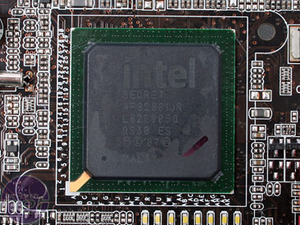
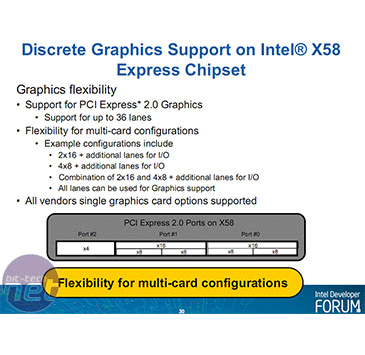
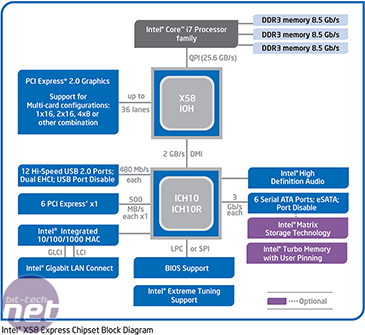
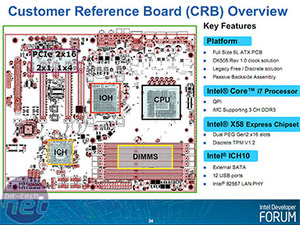
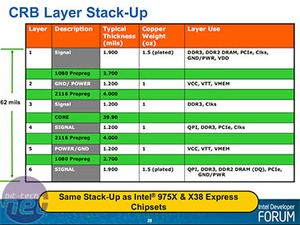







Want to comment? Please log in.